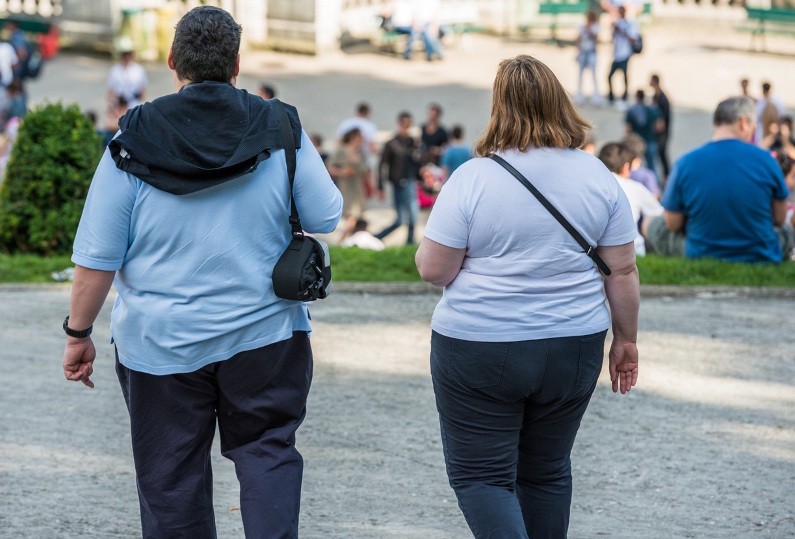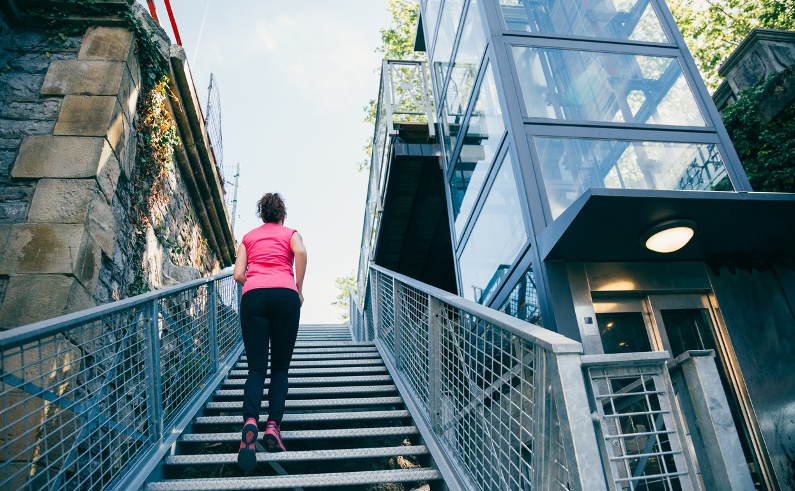Sedentary lifestyle is that nice comfortable way of living that comes from doing nothing. Just sitting or lying on the sofa watching TV and not bothering about life going on outside. It’s what we crave after a long day working hard, under pressure and accumulating tension: doing nothing, just lying there and preferably eating something that provides some much-needed emotional comfort – after all, our energy has been totally drained out and we deserve to just slump out, nice and relaxed, right?
Yes, regardless of what motivates you, a sedentary lifestyle is exactly that, a life with a lack or reduction of physical activity, whether through exercise or not. The first consequence of “doing nothing” is a significant decline in calorie expenditure. In numerical terms, that means burning less than 300 calories per day through physical activities. That’s ridiculously insignificant!
The added problem is that it is usually accompanied by very high-calorie eating habits. In this case, it’s nothing more than a simple mathematical equation:
Exactly! The excess calories ingested will cause you to gain weight gradually. If this scenario carries on for too long, fat will build up and you may become obese – if you aren’t already! That is the first serious effect from a sedentary lifestyle, but by no means the only one!

Obese couple (Photo: pixinoo / iStock)
In addition to obesity, a sedentary lifestyle is also bad for your health in other ways:
Increased cancer risk: according to the WHO, sedentary lifestyle is already the world’s fourth major cause of death. Around 21% of colon and breast cancer cases are the consequence of a lack of exercise.
Your mood and mental health get worse: physical activities are essential in order to maintain a good mood and mental health. They encourage the production of good hormones such as endorphins. Their absence leads to a greater feeling of anxiety, nervousness, restlessness and hopelessness. Not very good, is it?
Your memory suffers: being active helps your brain to function well (I’m going to write an article specifically dedicated to this topic. If you want to make a move now, I suggest you read the book Spark!). A lack of activity, on the other hand, has the opposite effect, which can be increased if you are under any other negative condition affecting your memory, such as a long term use of antidepressants.
You start to lose sleep: nothing like a life filled with physical activities to help you to sleep well. Inactivity, in turn, makes you more restless and greatly affects your sleep.
Increase in joint pains and backaches: the lack of exercise equals weaker muscles. After a certain age, your bone structure can no longer handle all the weight burden without the help of strong muscles. I’ve been through that recently! Going back to a physically active life plus the muscular reinforcement made my backache vanish completely!
Rise in blood sugar levels: This is doubly harmful. On one hand, it increases the probability of developing diabetes over time; on the other hand, it causes greater inflammation of the blood vessels, a perfect setting for cholesterol to accumulate and block your arteries. The direct consequence is an increased risk of a heart attack.
Speeds up the loss of your quality of life in old age: the magic triad to aging well consists of a healthy diet, a reasonable amount of bodybuilding-associated physical exercise and hormone replacement, when necessary. To stop exercising greatly reduces your chances of living longer and better for many years.
So, now what? Is there a way out for this?
I’m stationary, inert, chubby, and although I’m well aware that I’ve got to abandon this sedentary lifestyle (perhaps due to a recent health scare), I can’t be bothered to get out of it. I get tired just by watching those people at the gym or in the park, sweating and running! What can I do?

Consultation with the doctor (Photo: M_a_y_a / iStock)
The first recommendation I make, I mean it, is to see your doctor. This goes for everybody, but if you are obese, older or have a pre-existing known or unknown medical condition, it is essential that you see a doctor. He is the only one who can request exams, give you a specific diagnosis regarding your health, guide you on getting back to taking physical exercise safely and providing follow-up in the process.
After that, seek guidance from a good fitness coach and set up an exercise plan for you together, starting off slowly, of course. This professional will be essential towards your recovery and will be able to accompany you daily. The objective will be to help you, little by little, to gain strength, conditioning, lose weight and above all: not get hurt.
Believe me, there is nothing more discouraging than to start off, abandon a state of inertia, and after a while, suffer an injury and have to be out of action for a few weeks. It’s devastating! Worst of all, you know exactly what will be there just waiting to comfort you, right? The sofa, the bag of potato chips, the TV…
This is great. You don’t abandon inertia through physical exercise alone. If you increase the amount of physical activity in your daily routine you are already taking a giant step towards leaving your sedentary lifestyle behind, and better still: it’s easier and less painful to start off this way. Below is a list containing a few ideas that I have used, and you can too, both at home and at work.

Pedometer (Photo: kvsan / iStock)
1. Buy a pedometer and start to measure the number of steps you take per day. It’s amazing to discover how far you walk every day and how you can increase gradually. It’s very helpful and also very stimulating, especially as you progress.
2. Do house chores, such as tidying up and doing the housework, or gardening.
3. Move while watching TV. Do some stretching exercises, ride on an exercise bike, do some yoga.
4. Leave the car at home and go on foot around the neighborhood to sort out small things, like walking the dog, going to the shops, shopping at the supermarket.
5. When you’re speaking on the phone, stand up and walk around.
6. Replace your car with a bike or public transport if you can. Even if you don’t do this every day, whenever you do, you will be moving.
7. Park the car further away than usual. Park a few (more) blocks away or in one of the most faraway spots in the parking lot and walk the difference. If you have a pedometer, see how much this adds to your total daily steps.
8. Whenever you need to speak to someone in the office, avoid sending e-mails or phoning. Get up from your chair and go to the person you want to speak to.
9. Use the stairs to go up and down between floors. If you work on the 15th floor, get off the lift on the 12th and walk the remaining three floors. Day over, time to go home? Why not go down via the stairs, after all, on the way down it’s always much easier and your health will much appreciate it!

Climbing stairs instead of the elevator (Photo: ASIFE / iStock)
10. Avoid the escalators at shopping malls and prefer the stairs to go up and down. Go on! It’s never more than one or two floors!!!
There are a lot more small things one can do. I believe you’ve got the idea here: replace activities where you don’t move for ones where you do. And all with an extra benefit: they won’t take up more of your time!
Honestly, the amount of times I’ve decided to go to work by bike and spent the same or sometimes less time in traffic than if I had gone by car…On very chaotic days, I even got the extra satisfaction of seeing the look of distress on the faces of the drivers stuck in traffic as I cruised along the cycle path, feeling the wind on my face and smiling at life. On these occasions, the trip home becomes a leisurely ride. Awesome!
It’s terrible at the beginning, I know, and it may seem unbearable. Getting out of a state of inertia, after all, is indeed very difficult. The good news, however, is that as you start and persist at taking exercise, your body starts to adapt and eventually begins to actually demand it.
As my wife says, after a while, your body starts to “crave” exercise, in other words, if you exercise regularly and for some reason stop for a few days, your body starts to experience withdrawal and urges you to start again. Hearing this may seem surreal to you if you’re living a sedentary lifestyle, but it’s true. I’ve been through it a few times.
1. Do what you like doing. Remember your childhood and teenage days and you used to exercise more regularly? What did you enjoy the most? In my case, it was riding a bike. Well, I suggest you go back to doing that favorite sport of yours. As it is associated with leisure and pleasure, it will be less difficult to start there.
2. Go slowly. It may seem like a joke to those living a sedentary lifestyle, but after a short time exercising, you start getting psyched up and will want to go that much further, to increase rhythm and intensity. Don’t do this abruptly so as not to be at risk of hurting yourself. Go easy, let your body get used to it, your muscles get stronger and move on safely.
3. You are not training for performance, but to benefit your body and your health. Most of the sports-related encouragement and stimulation seen in the media has to do with records, exceeding limits, long distances, performance. That is for professional athletes and I suggest you ignore this. In your case, the trophy is to leave a sedentary lifestyle behind and include physical exercise into your weekly routine. Enjoy, make the most of it; after all, the beginning will be hard enough already. It is unnecessary and unproductive to be concerned about athletic performance.

Running with friends (Photo: svetikd / iStock)
5. The road is full of highs and lows and the secret is, whenever you fall, get up and start again. This point is essential: you will not progress in a regular manner. You will improve, and suddenly something happens that will make you stop. Then you start again for a while, make some improvement, then something will happen and cause you to stop again. And so on.
These stops can be because of a flu, a week when you can’t exercise for some reason or other, an injury or something that happened to me once: a broken arm after falling off a bike (I’d just like to mention, by the way, that I wasn’t moving when I fell!).
Don’t create the illusion that these low points won’t happen. They will, and the secret is to recognize them and start up again. Every time this happens, and you are able to bounce back, it will make you mentally stronger and more confident. Guaranteed!
6. Don’t forget to strengthen your muscles. It may seem boring to work out or do functional training, not to mention that the beginning is usually painful. Stronger muscles, however, will not only make your favorite exercise or sport easier but will also protect you from injuries and reduce pain. Although I had already been cycling regularly for about two years, it was only when I started to work out that the back pains disappeared. In addition to that, nowadays I go uphill with the bike much more easily than before. All thanks to the muscle training. It is definitely worth it!
7. Get a watch to check your pulse and measure your caloric expenditure. This is very helpful and there are many models available on the market. I use a Garmin. Knowing your pulse rate during exercise and how much energy (calories) you are burning will help you to read your body and be better aware of your progress.
8. Download an athletic activity control app. There are many of those around, too. I use Strava. It’s straightforward, fun, and records your efforts and personal records as you go along. It also allows you to connect to friends and you can all encourage each other to do better. It works!
Getting out of a state of inertia and leaving a sedentary lifestyle behind isn’t easy, I know! But seriously, I suggest you take courage and make a start. Resuming physical activities is perhaps the most important thing you can do for your health and standard of living today and in many years still to come in your life. Go for it, take the first step and start. I will be here, cheering you on!
Cover photo credit – First day of exercises (Photo: kali9 / iStock)